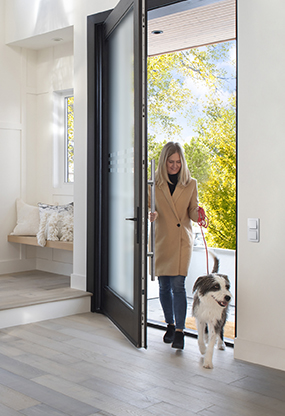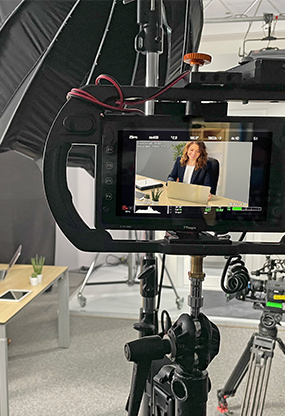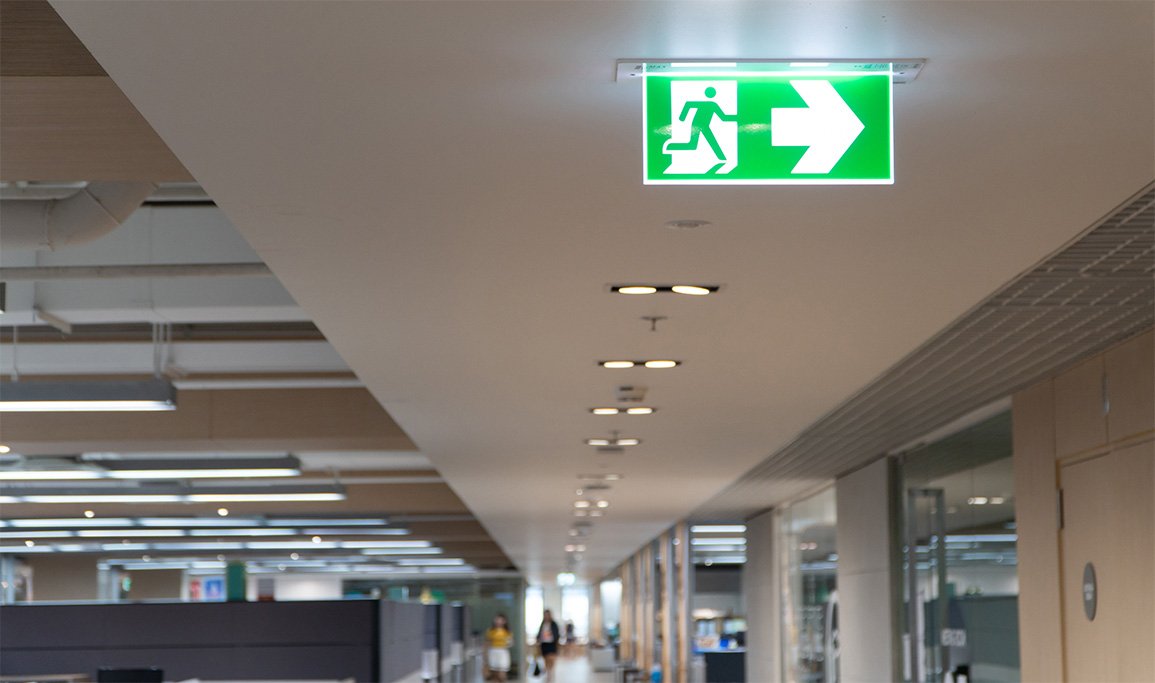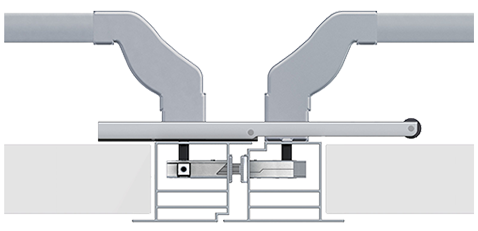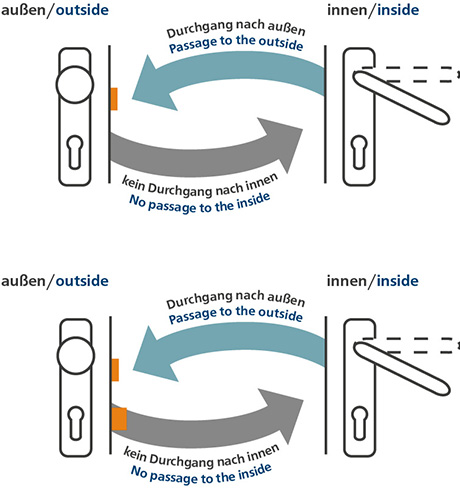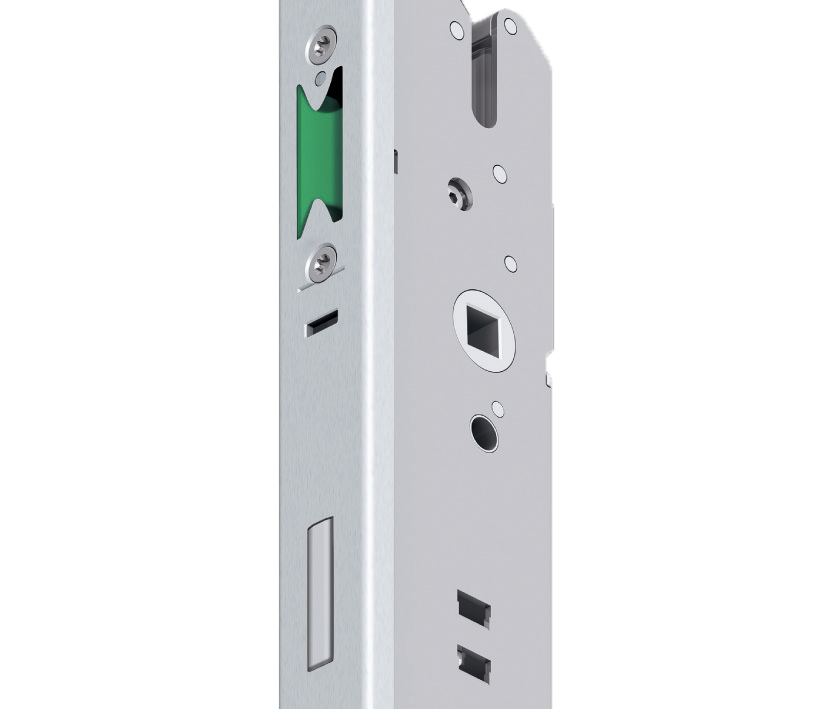Know-how
Standard-compliant emergency exit security
scroll down
Construction Products Regulation and CE labelling
The EN 179 standard for emergency exit doors and EN 1125 standard for panic locks define the features and functionality of locking systems on emergency exit doors across Europe. These EU standards must be implemented in all EU member states. This means that they must be integrated into the relevant national laws and, following a transition phase, all contradictory national standards and regulations must be repealed.
Based on the psychological behaviour of people in panic situations and based on experience in escape route design, these standards aim to ensure the protection and safety of people in emergency situations as a top priority. In the event of danger, there should always be an escape option available to protect the life and health of persons involved. Testing under these standards ensures functionality in relation to safety in the event of danger, as well as security against break-ins and theft. The complete door locking system, including lock, strike plate, cylinder, door furniture and, if applicable, electric strikes, are all tested together.
Emergency exit doors must display a CE label in accordance with Construction Product Regulation (CPR) 305/2011. According to the regulation, the manufacturer of the emergency exit door is responsible for this CE labelling in accordance with EN 14351-1 and must be subject to external monitoring. In addition to the CE Certificate of conformity and Declarations of Performance, proof of constraint freedom, details on guaranteed features and installation/maintenance instructions are also required. In accordance with standards EN 179 and EN 1125, components of an approved emergency exit door locking system can be delivered separately. The separate components must then be professionally assembled and installed by the installation company. Door manufacturers and, where applicable, door furniture retailers, are subject to the information obligation in this case.
Panic or emergency situation?
Large crowds of people (e.g. in shopping centres, cinemas and concert halls) must be able to locate the emergency exits in a panic situation without prior knowledge and open them without any assistance. Panic locks must therefore be designed to ensure that they work reliably at all times and allow people to escape, even in extreme situations.
In workplaces or smaller commercial buildings, the smaller number of people often means it is unlikely to result in panic. In emergency situations, the people involved are often already familiar with the door situation and can find the emergency exits in the event of danger through prior training or site plans.
Emergency exit door locks
Emergency exit doors are the designated doors as part of escape routes. They should generally always open in the direction in which people are fleeing. Special emergency exit door locks should ensure that these doors can be opened easily and safely while still providing reliable break-in protection. Electric emergency exit door systems allow users to lock emergency exit doors when there is no one in the building to prevent break-ins. Electric emergency exit systems offer this function precisely for these situations. FUHR deadbolt switching contacts can be used for lock monitoring and can be integrated into an alarm system or building management system.
Fire and smoke protection doors help to prevent the spread of fire or smoke from one fire protection area to another. These doors are equipped with locks that keep the door shut even in the event of a power cut. The complete door system must therefore be suitable for fire and smoke protection doors; for locks, a fire protection version must be integrated.

Use of emergency exit lock in acc. with EN 179
EN 179 applies for buildings in which panic situations are not expected to develop. People in these environments are familiar with the layout and operation of the emergency exit doors. This is usually the case in offices and places of work, for example. Here, push plates or push pads can be used as the operating element.

Use of panic door locks in acc. with EN 1125
EN 1125 applies in public buildings, e.g. shopping centres, cinemas or event spaces in which, due to the high footfall,panic situations may arise. People in the building are not familiar with the location of the emergency exits or how the locks work. Doors must be able to be opened intuitively using horizontal push bars.
Regulations for double-leaf emergency exit doors
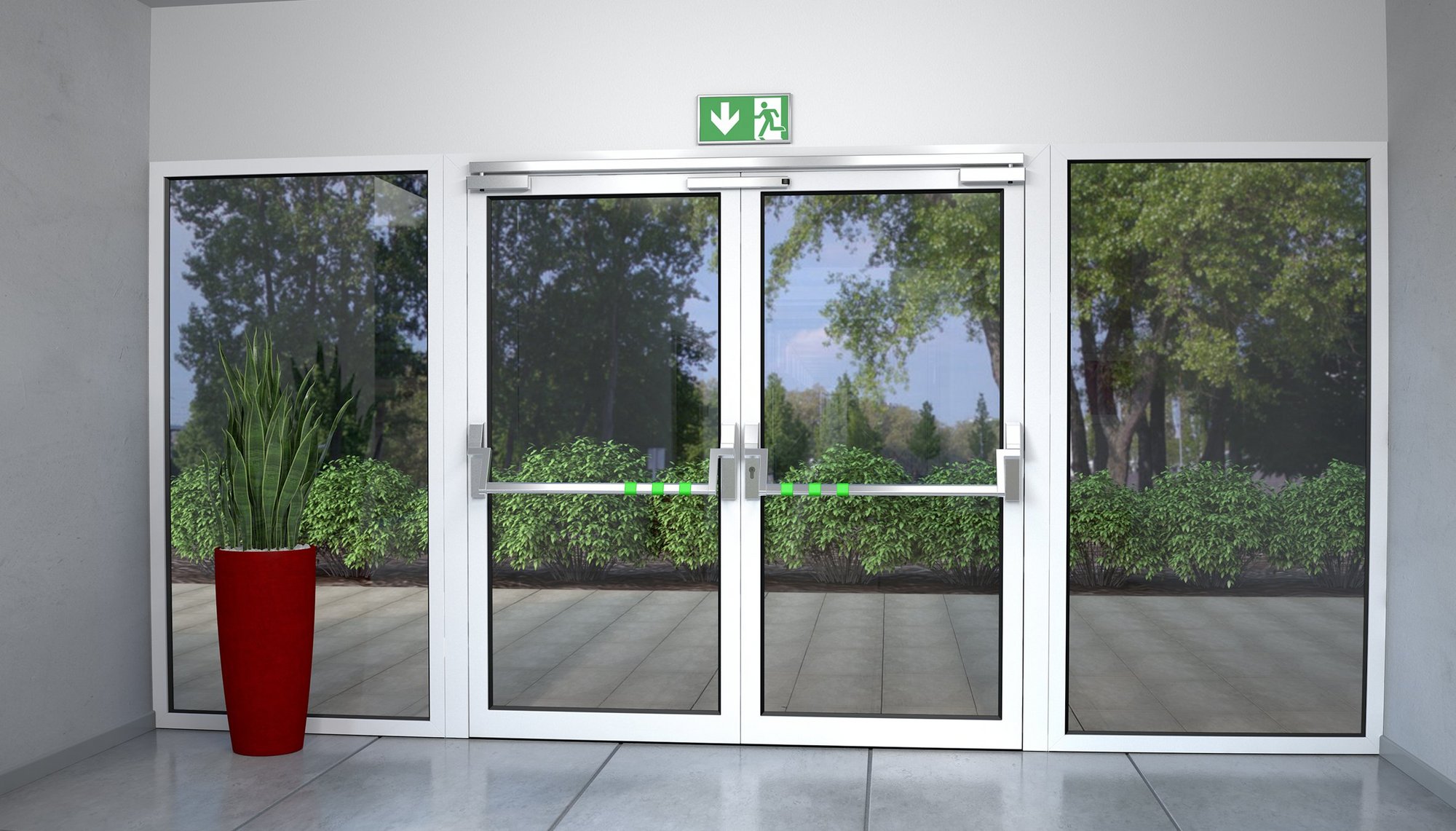
When is a double-leaf emergency exit door needed?
According to the regulation, the use of double-leaf emergency exit doors is determined based on the relevant construction circumstances and the number of people that must use the doors in case of emergency. When planning and designing double-leaf emergency exit doors, the main focus lies on how the individual components work together. Only a precise combination of components can ensure a safe escape option and prevent complications.
In accordance with the standards EN 179 and EN 1125, it must be ensured that both doors can open without collision when opening simultaneously or, where there is an inactive leaf, opening of the active leaf is not restricted. Such collisions and/or restrictions can occur in the profile, lock/strike plate area or as a result of the door fittings (panic push bar, lever handle).
Tests must be carried out to ensure that the doors can be opened unhindered by using the system standard profile with 5 mm shadow gap or using special panic profiles with up to 11 mm shadow gap. This also applies for the hinge pivot points and the leaf width of the active and inactive leaf. These are all key for ensuring the door opens without the need for force.
Switch function E
– uniform follower
Scope:
Entrance doors that need to prevent unauthorised opening from outside:
e.g. doors to boiler rooms, lift systems or storage and office buildings, main entrances in shared buildings, etc.
Door furniture:
Inside:
Lever handle or panic push bar
Outside:
fixed knob or push handle
Function:
Opening via door furniture is possible from the inside at all times. Door can be opened from the outside with the cylinder key.
Switching function B
– split follower
Scope:
Doors for escape routes where temporary access from outside must be possible via the lever handle:
e.g. emergency exit doors in administrative or office buildings, retirement homes, side/back doors in hotels or schools, etc.
Door furniture:
Inside:
Lever handle or panic push bar
Outside:
Lever handle
Function:
Opening via door furniture is possible from inside at all times. The exterior fittings are always engaged or disengaged (activated/deactivated) with the cylinder key.
The fully motorised multitronic 881GL lock has a similar function, the switching function B1 via the control unit’s day latch function.
Access function D
– split follower
Scope:
Doors for emergency exits and escape routes where temporary access from outside must be possible once panic function is activated (e.g. for rescue teams):
e.g. emergency exit doors in administrative or office buildings, retirement homes, side/back doors in hotels or schools, etc.
Door furniture:
Inside:
Lever handle or panic push bar
Outside:
Lever handle
Function:
Opening via door furniture is possible from inside at all times. From outside, the bolt is activated using the cylinder key. In unlocked position (access function) or following panic opening, the door can be opened from the outside until it is relocked using the lever handle.
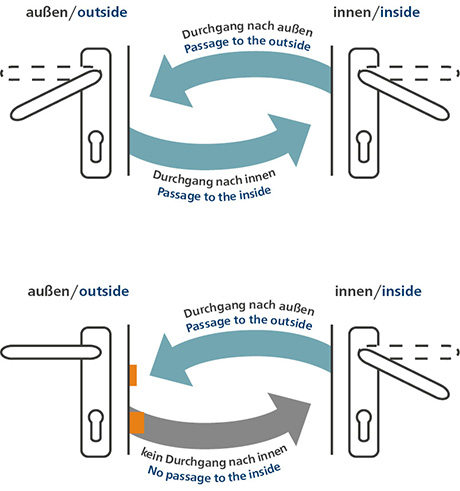
FUHR locks
All locking elements are retracted with the cylinder key and locked in this position.
FUHR motor locks
The permanently-open function is set using the multi-functional control.
Electric emergency exit systems
Electric emergency exit systems including electric locking systems and control units can be part of a building’s security system in accordance with EN 13637. These offer increased security against misuse and allow users to manage and control emergency exit doors. For safety reasons, all additional functions (e.g. access controls) must ensure fail-safe approval at all times.
Burglar alarm systems or access control systems (e.g. finger scanners and radio keypads) do not conflict with the emergency exit door function when connected to an electric panic door or emergency exit lock. Installation by a qualified installation company is strongly recommended.
